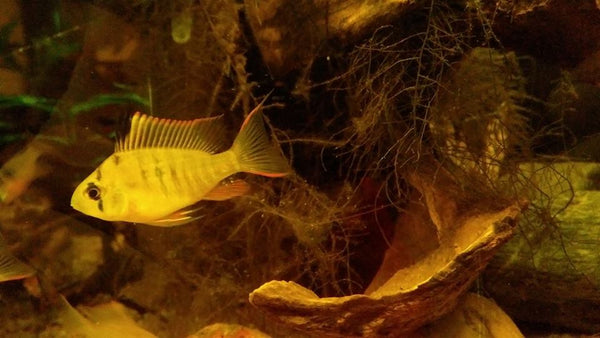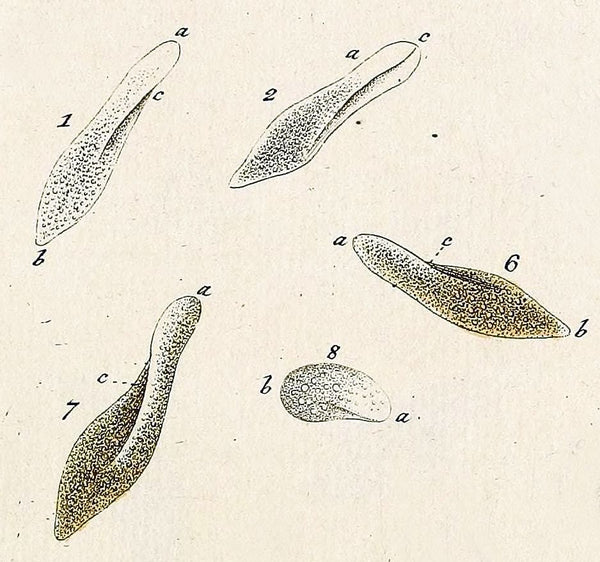- Continue Shopping
- Your Cart is Empty
What about that function?
After several years of existence of Tannin Aquatics, and well into our ongoing mission to throw light on the formerly dark world of blackwater, botanical-style aquariums, there are more and more new people entering the game.
This is a very exciting time, because we are no longer in the "Will doing this kill my fishes?" mode, or the "How will this make my tank look?" mode, and are more into a "How can I utilize these materials and ideas to do____________?" period.
It's time to look deeper at the function of using botanicals in our aquariums.

As a hobbyist, I know that I have personally grown in my pursuit of knowledge and improved technique. And I'm hardly unique. When you think about it, hobbyists have been sort of 'poking at the edges' of this stuff for many years...it's only in recent years that we're starting to focus more on this type of aquarium as a means to move the hobby further.
And, in order to make sense of it all, we spend a great deal of time examining the processes which occur when leaves and other botanicals are added to the aquarium. And this is important, not only from an aesthetic standpoint, but from a functional/operational standpoint.
It definitely differs from our practice in decades past, where the idea of throwing in materials that affect the water quality/composition was strictly a practice reserved for dedicated speciality hobbyists, like killifish breeders, Dwarf Cichlid keepers, etc., who wanted to create special conditions for breeding.

Yeah, you and won't read about incorporating some of these esoteric applications for this stuff in just "any old aquarium blog", right?

Okay, enough self aggrandizement for today, Scott...
Nowadays, we're advocating the addition of such materials to our aquariums as a matter of course, for the everyday purpose of replicating natural processes for our fishes. We understand- or are attempting to understand- the impact on both our aquariums' ecology and the husbandry techniques involved.
Yeah, sort of a different application that's evolving almost daily.
It goes without saying that there are significant implications for both the biology and chemistry of the aquatic habitats when leaves and other botanical materials enter them. Many of these are things that we as hobbyists observe every day in our aquariums! Some- we are pretty certain of (like, the color that they impart to the water, the measurable differences in pH, TDS, etc...). Others are a bit more esoteric-yet nonetheless important, in their implications...

A lab study I came upon found out that, when leaves are saturated in water, biofilm is at its peak when other nutrients (i.e.; nitrate, phosphate, etc.) tested at their lowest limits. This is interesting to me, because it seems that, in our botanical-style, blackwater aquariums, biofilms tend to occur early on, when one would assume that these compounds are at their highest concentrations, right? And biofilms are essentially the byproduct of bacterial colonization, meaning that there must be a lot of "food" for the bacteria at some point if there is a lot of biofilm, right?
Hmm.
More questions...

Does this imply that the biofilms arrive on the scene and peak out really quickly; an indication that there is actually less nutrient in the water? Or, is the nutrient load "bound up" in the biofilms? Could this be why compounds like nitrate and phosphate always seem to be essentially undetectable in our tanks, despite the "load" of decomposing botanicals and such that would lead us to believe that there should be significant concentrations of the stuff detectible?
And when our fishes and other animals consume them, does this provide a significant source of sustenance for them? Well, we know that it does, right?
Hmm...?

Oh, and here is another interesting observation:
When leaves fall into streams, field studies have shown that their nitrogen content typically will increase. Why is this important? Scientists see this as evidence of microbial colonization, which is correlated by a measured increase in oxygen consumption. This is interesting to me, because the rare "disasters" that we see in our tanks (when we do see them, of course, which fortunately isn't very often at all)- are usually caused by the hobbyist adding a really large quantity of leaves to an established tank all at once, resulting in the fishes gasping at the surface- a sign of...oxygen depletion?
Makes some sense, right?

These are interesting clues about the process of decomposition of leaves when they enter into our aquatic ecosystems. They have implications for our use of botanicals and the way we manage our aquariums. I think that the simple fact that pH and oxygen tend to go down quickly when leaves are initially submerged in pure water during lab tests gives us an idea as to what to expect.
A lot of the initial environmental changes will happen rather rapidly, and then stabilize over time. Which of course, leads me to conclude that the development of sufficient populations of organisms to process the incoming botanical load is a critical part of the establishment of our botanical-style aquariums.

Fungal populations are as important in the process of breaking down leaves and botanical materials in water as are higher organisms, like insects and crustaceans, which function as "shredders." So the “shredders” – the animals which feed upon the materials that fall into the streams, process this stuff into what scientists call “fine particulate organic matter.”

And that's where fungi and other microorganisms make use of the leaves and materials, processing them into fine sediments. And our understanding of the external influences on the aquatic environments is important. Allochthonous material is not just insects and fruits and stuff- it can also include dissolved organic matter (DOM) carried into streams and re-distributed by water movement.

And the process happens surprisingly quickly.
How quickly? Well, I found some information on that...
In experiments carried out in tropical rainforests in Venezuela, decomposition rates were really fast, with 50% of leaf mass lost in less than 10 days! Interesting, but is it tremendously surprising to us as botanical-style aquarium enthusiasts? I mean, we see leaves begin to soften and break down in a matter of a couple of weeks- with complete breakdown happening typically in a month or so for many leaves.
And biofilms, fungi, and algae are still found in our aquariums in significant quantities throughout the decomposition process, right?
So, what's this all mean? What are the implications for aquariums?

I think it means that we need to continue to foster the biological diversity of animals in our aquariums- embracing life at all levels- from bacteria to fungi to crustaceans to worms- and ultimately, our fishes...All form the basis of a closed ecosystem, and perhaps a "food web" of sorts for our little aquatic microcosms.
Yes, I talk about this incessantly, right? However, it's a very interesting concept- a fascinating field for research for aquarists, and we all have the opportunity to participate in this on a most intimate level by simply observing what's happening in our aquariums every day!

Now, I understand that this is an aggregation of a lot of facts coming from different directions, being interpreted for our purposes. However, these interesting tidbits of knowledge are things that we can utilize to correlate what we observe every day in our aquariums, and allow us to better make inferences about the actual function of them, right?
Of course, it starts with looking at the compelling natural habitats from where our fishes come, and creating cool aquariums that we actually enjoy looking at...I get that...
However, in addition to the purely visually aesthetic approach, even more amazing, more functionally aesthetic and realistic aquariums can be created by simply looking at what caused these habitats to form in Nature, and assembling and placing the components you're using based upon that.

The idea of simulating fallen tree trunks and logs and branches in aquariums is as old as the art of aquarium keeping itself. I've even beaten the living shit out of this idea as recently as a couple of days ago- for like, the eleventh time in this blog...However, I think the approach of looking at them not just as "set pieces"- but as the foundational cornerstone of a biological and physical habitat gives new context to the practice. Rather than just, "Woah, that piece of wood is a great place for my cichlids to hide!", perhaps we could think about how the wood provides foraging, or a corralling feature for leaf litter, soil, roots, etc.

Everything from driftwood to twigs to roots has an important place in simulating the function and look of the aquatic habitats we love so much. Simply looking at this stuff from a purely aesthetic standpoint sells it short, IMHO.
There is so much more. And the reality is, even if you're constructing your aquarium mainly for the function- the aesthetics often emerge and "steal the show, anyways!

Combinations of these materials (configured in various ways) could create an interesting functional AND aesthetic terrestrial component that could influence the water chemistry and ecological diversity of our systems- exactly like they do in Nature...

As always, the big opportunity here is not only to create a realistic, compelling display- it's to further unlock some of the secrets of Nature and study the interactions between land and water. It's about incorporating function into our displays, and appreciating the interesting aesthetics which accompany it!

Every observation we make on all sorts of these aspects of the botanical-style aquarium helps us move the needle a bit. With a growing number of hobbyists experimenting with botanical materials in all sorts of aquariums and enjoying improving fish health, spawning, etc., it's getting more and more difficult to call it a "novelty" or "fad."
I mean, Nature isn't exactly a "fad" or trend-follower, right? She's been doing this stuff for eons. We're just sort of "catching up"- and beginning to study, contemplate, and appreciate what happens when form meets function in the aquarium.
And that's pretty exciting, isn't it?
Stay engaged. Stay curious. Stay dedicated. Stay observant. Stay open-minded...
And Stay Wet.
Scott Fellman
Tannin Aquatics







Scott Fellman
Author